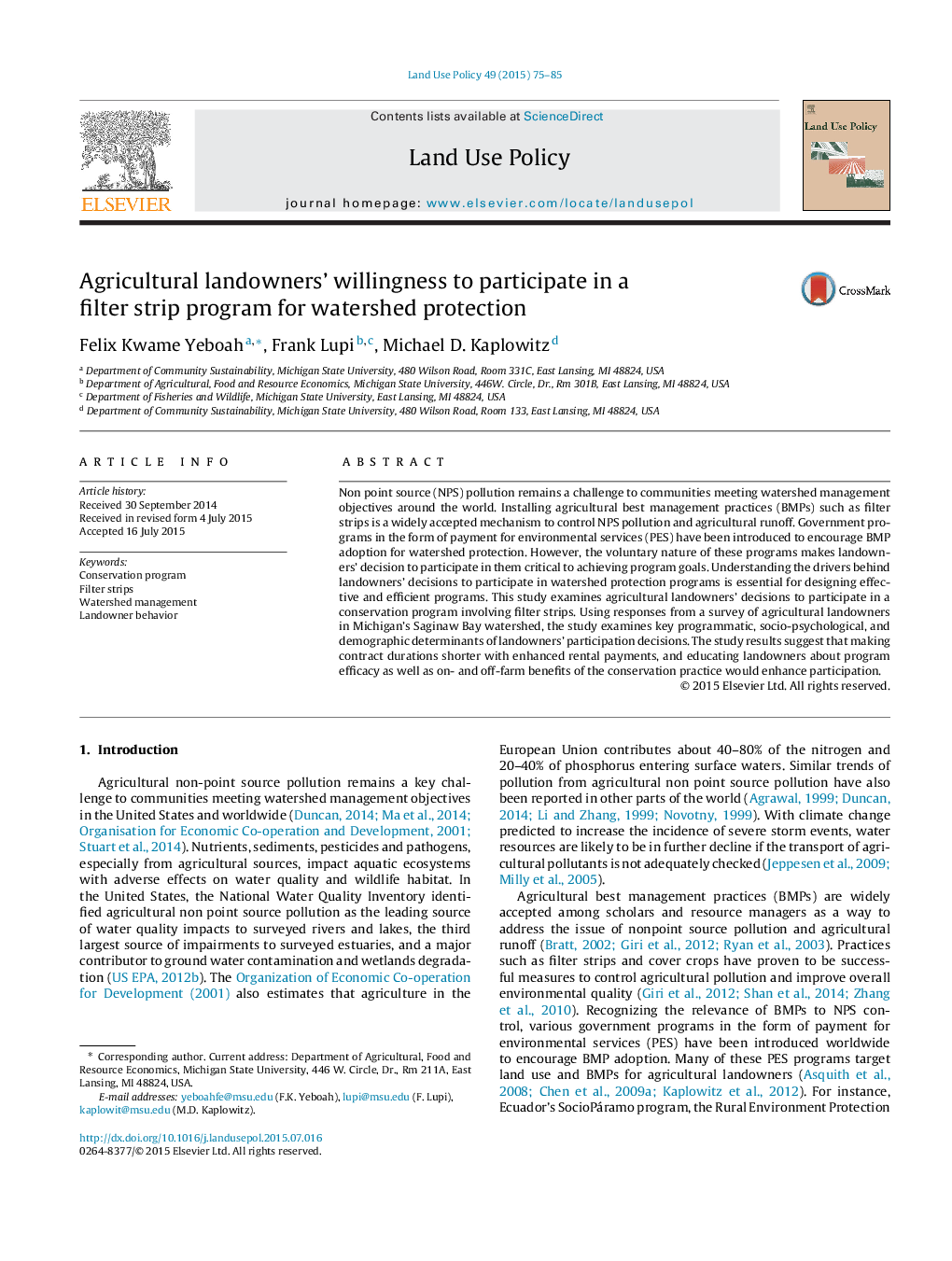| Article ID | Journal | Published Year | Pages | File Type |
|---|---|---|---|---|
| 6547735 | Land Use Policy | 2015 | 11 Pages |
Abstract
Non point source (NPS) pollution remains a challenge to communities meeting watershed management objectives around the world. Installing agricultural best management practices (BMPs) such as filter strips is a widely accepted mechanism to control NPS pollution and agricultural runoff. Government programs in the form of payment for environmental services (PES) have been introduced to encourage BMP adoption for watershed protection. However, the voluntary nature of these programs makes landowners' decision to participate in them critical to achieving program goals. Understanding the drivers behind landowners' decisions to participate in watershed protection programs is essential for designing effective and efficient programs. This study examines agricultural landowners' decisions to participate in a conservation program involving filter strips. Using responses from a survey of agricultural landowners in Michigan's Saginaw Bay watershed, the study examines key programmatic, socio-psychological, and demographic determinants of landowners' participation decisions. The study results suggest that making contract durations shorter with enhanced rental payments, and educating landowners about program efficacy as well as on- and off-farm benefits of the conservation practice would enhance participation.
Related Topics
Life Sciences
Agricultural and Biological Sciences
Forestry
Authors
Felix Kwame Yeboah, Frank Lupi, Michael D. Kaplowitz,
